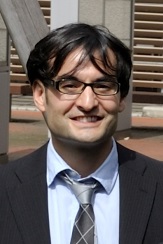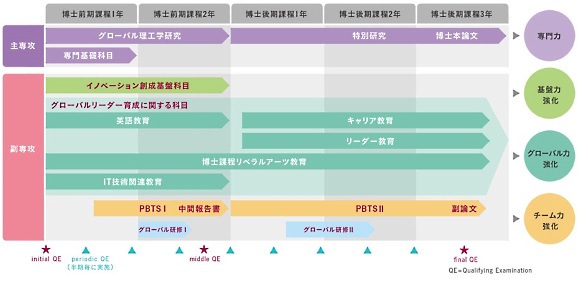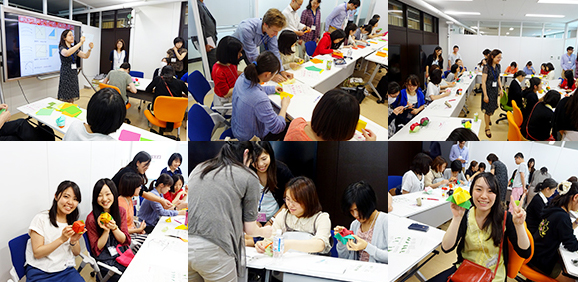Essential Mathematics for Global LeadersⅡを開講します。この科目は、グローバル理工学副専攻の履修科目になっていますが、博士前期・後期課程に所属し、関心のある学生であれば、どなたでも履修することができます。なお、講義は英語で行われます。
本講座の趣旨
 Theme: Differential Equations (in the broader sense of dynamical systems) are the core topics in mathematical modeling.
Theme: Differential Equations (in the broader sense of dynamical systems) are the core topics in mathematical modeling.
数理モデルにおいて最も利用される「微分方程式」(広い意味で、力学系)
Objective: Through examples in Mathematica to understand
Mathematicaでの例を通じて以下のことを理解すること
-
what are Ordinary, Partial Differential Equations (ODE, PDE)
ODEとPDEは何か、どうやって扱うか。 -
some methods of resolution: closed forms, Series Solutions, Fourier & Laplace Transforms…
代表的な解法:閉形式解、級数解、フーリエとラプラス変換など -
how to use Mathematica to solve and visualize solutions.
Mathematicaを使って解き、解を視覚化する.
学生へのメッセージ
As part of the Essential course series, Essential Maths I (Statistics) and II (modeling ODE and PDE) are supposed to endow/increase capability to model concrete problems with mathematical equations. Essential Math II focuses on the use of a math software, and through its visualization functionality to learn/put into practice basic methods of resolution. Mathematical notions will be introduced formally, but main theorems will be stated in a concrete way. Most proofs will be omitted, in particular only basic notions of Calculus and of Linear Algebra are expected for this course.
英語でのEssentialコースシリーズの一つとして、Essential数学 I (統計学)とII (数理モデル入門)は、方程式などで具体的な問題をモデル化する力を向上させることを目的としています。Essential 数学IIは数学ソフトの利用を中心にしていて、視覚化機能を使って基礎的な解法を学び、適用できるようにします。数学的定義については、主な定理は具体的に記述し、正式な証明はほとんど省きますので、初等の微分積分と線形代数の知識だけが必要とされます。
講義概要
| 科目名 |
|---|
| Essential Mathematics for Global LeadersⅡ [17S1007] |
| 単位数 |
| 2.0単位 |
| 担当教員 |
| Dahan, Xavier (お茶の水女子大学リーディング大学院推進センター特任准教授) |
| 対象 |
| 博士前期・後期課程 |
| 場所 |
| 人間文化研究科棟408室 |
| 日時 |
|
集中講義に変更されました。 2018年 2月14日(水)5~8限(13:20-16:30) 2月16日(金)3~4限(10:40-12:10) 2月19日(月)5~8限(13:20-16:30) 2月21日(水)5~8限(13:20-16:30) 2月22日(木)5~8限(13:20-16:30) 2月23日(金)3~4限(10:40-12:10) 2月27日(火)5~8限(13:20-16:30) 3月 1日(木)5~8限(13:20-16:30) |
| 授業の形態 |
| 講義、コンピュータで実習. Lecture, computer practice. |
| 授業計画 |
|
内容:Introduction to mathematical modeling with Mathematica The following topics will be introduced, (maybe not exactly in this order !). All topics are illustrated with Examples and some small projects in Mathematica.
0. Introduction to Mathematica. Mathematica
1. Continuous differential systems.
2. Discrete differential systems (finite-difference systems).
3. Partial Differential Equations. |
| 教科書・参考文献 |
|
a) Dynamical Systems with applications using Mathematica (S. Lynch, Birkhauser 2007) b) Introduction to Partial Differential Equations for Scientists and Engineers Using Mathematica (Kuzman Adzievski, Abul Hasan Siddiqi. Taylor & Francis, 2013) |
履修登録
履修登録期間: 10月 2日(月)~ 10月14日(土)
上記登録期間内に登録ができなかった場合は、学生センター棟1階学務課にご相談ください。
お問合せ
お茶の水女子大学 リーディング大学院推進センター
Tel: 03-5978-5775
E-mail:





